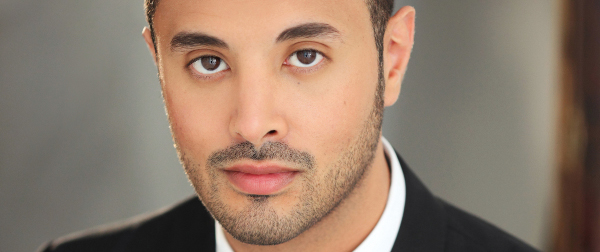
Since graduating from university, you’ve been busy launching two companies – app development firm Appiphany and games developer Na3m Games. How have they been going?
Both companies were pretty much launched by January of this year. Our first app was released around January/February. Both companies are incorporated in the US. Appiphany is currently based in Los Angeles, US, and Na3m Games is based is based in Amman, Jordan.
I started them with two of my best friends and fraternity brothers, who I’ve known since freshman year in college. I always say "invest in your friends" and the hope is that you’ve picked proper friends who you can surround yourself with. If you have, you need to invest in them and build a trust. With start ups you need to have the same vision, belief and the passion. You all need to be passionate about the dream.
So what is the vision?
The vision is world domination! No, seriously, Appiphany is all about creative problem solving – creating applications that looking at proven markets, figuring out what the gaps and opportunities are there and looking at how we can engage and add value to that market.
With our latest application, Instafeed, we chose Instagram as the platform we wanted to reach out to and kind of create on for various reasons. Mainly because of personal interest and also because of co-founder of Instagram is also a fraternity brother. So it felt like a solid relationship.
What Instafeed introduces is a new interaction and way to find content on Instagram that didn’t exist before. Instagram is very binary follow-unfollow or it will let you go to the popular page to see who they suggest you follow. However, you’re not really getting content that’s valuable.
With Instafeed we take lists like you might find on Twitter and we break down the content into different categories where we highlight influences of each category who we feel users should know about. In order to take it to the next level we allow you to customise and curate your own content – have one for family, have one for friends. If they are public accounts you can subscribe to them and not have to follow them on Instagram.
It’s clearing up a lot of the muddled content and noise that you can get when you have too many followers. The most important aspects of it are two things. We recognise that in the 100m people who are on Instagram more than 80% of them are consumers. With our next update we’re turning the consumer into a producer because nobody can tell you what you need to know better than the consumer, so we’re adding their value to the platform.
We added a category called ‘international’ with which we decided to highlight Instagramers from around the world who you might never know. Sometimes when companies say they’re global they’re actually focusing primarily on the American market, despite that being a small percentage of the market. More than 70% of people who use Facebook, for example, are from outside of the USA.
People are using Instragram today in the same way they’ve been using Youtube – as a channel to push their products, to market themselves, market their content, art etc. We highlight influencers to give them more exposure, which doesn’t happen in a lot of other applications.
What kind of reaction has there been to Instafeed?
It’s been doing really well. We would appreciate more money for marketing but we’re getting some good coverage from magazines and websites in the US and we’re getting traction in the Middle East. It’s organically growing. It’s definitely getting a lot of traction. We’ve been dubbed as Instagram’s best friend but, like any other application, it needs more marketing.
How popular do you think Appiphany apps will become?
You can try to gauge the market and be as strategic as possible but, at the end of the day, it’s the user who decides. Nobody knew Snapchat would be as popular is it is – it’s gone crazy right now.
What we do is we create a model of what we believe are services that solve different problems on different platforms. Our goal is to produce six applications per year where the average is great and the great is a superstar. If one of them gets enough traction where it becomes its own entity then we’ll follow through and support it.
If you have five kids, not everyone is going to be the next leader of the free world but if one has the most potential you support them but don’t stop loving the rest. That’s how we look at this.
We have two applications in the pipeline – one after the summer and one close to New Year. Right now we’re putting the most marketing money into Instafeed because it’s the most popular.
What do you think will be the key to Appiphany’s success?
What we add to Appiphany is our cultural sensitivity and understanding. I’m Saudi Arabian born and raised and just educated in the US. My co-founders, one of them is of Filipino heritage and the other one is of Mexican and Italian heritage. That in itself, and recognising those cultural differences and embracing them, adds a little advantage because we introduce empathy into what we create. We understand that people aren’t just a number and we’re not all the same. That helps us to produce things with more care.
What was the thinking behind the creation of Na3m Games?
The first project I was involved with was Popover Games, which was sold in October 2012. I started out as an investor but ended up as a co-founder. It focused on heritage games that have been played over generations in real life but not translated online. We wanted to communicate culture and history without being too literal. Our tagline was "everybody plays".
The technology that we developed for it allowed users to communicate in their native tongue and it auto translates to whatever language the other players are comfortable with. That was my first venture. One of the first games was Yalla Tarneeb, which became the first Tarneeb game on Facebook and it’s still the top game. We’ve put it on hold right now because of bug fixes. We have since created Na3m Games.
We have an unfortunate tendency to celebrate mediocrity in the Middle East and because we’re so willing to support any content that’s created. We support it so much that they actually stop innovating.
When Na3m (New Arabic Media) was created the goal was to create games by the region, for the region, inspired by the region and at a global quality. Our first game will hopefully be released after Ramadan and it’s an educational game focused on kids from the age thee to eight, teaching them how to read, write and memorise the Arabic alphabet letters. It’s a great, interactive way to memorise these letters. You create characters and win things. It’s very much like Angry Birds. We want to communicate culture through entertainment and capitalise on what Arabs have been renowned for over the generations and that is story telling.
There’s still that stigma in the Middle East that local is not good enough. Western companies are thought of as being better than Middle Easter companies. We wanted to understand why, and I feel it’s about how the presentation happens, as well as the quality of the content. We want to create an Arabic company that creates content as though it came straight from Silicone valley. We’ve partnered with the University of Helsinki and we have good ties with Finland because it’s well known for both mobile and gaming.
There’s not a great deal of information on the Na3m Games website. What’s the reasoning behind that?
We can’t put too much information about it on our website yet because in the Middle East there is no IP protection. We can’t protect our content because there isn’t the proper infrastructure or laws that would allow us to comfortably say this is our idea and be public about it, hence why we’re incorporated in the US to be protected. You can’t deny that they have one of the most solid infrastructures when it comes to IP protection.
Looking ahead, how do you think social media change is going to develop in the coming years?
It’s going to be very saturated. You’re going to have types of people – people who are Instagram, people who are Twitter, people who are Facebook. It’s already happening. It all depends on what services these platforms provide.
Once we look at them as tools, which they are, to utilise to further push your products, your individual or your idea, then based on how good the features that are introduced to these platforms are, we’ll see what direction they’re going in.
Right now, it’s all over the place because I think that people still have a hard time looking at them as tools, like the telephone, television and radio. It’s because of how it’s been presented. Some people think it’s for politics, some people think it’s an innovative business angle, some people think it’s purely marketing. There’s a lot of education that needs to happen. All over the world because everyone is going to utilise it.






